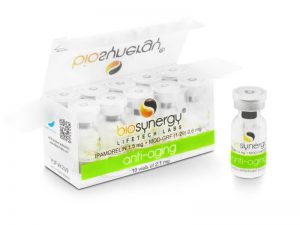We ship globally.
We have special channel shipping
on many brands for guaranteed delivery.
Ask us on [email protected]
IGF-des(1-3), also known as Des(1-3)IGF-I, is a truncated version of insulin-like growth factor-1 (IGF-I) that lacks the first three amino acids at its N-terminus. This modification makes it more potent than standard IGF-I, both in vitro and in vivo. \
Key Characteristics:
- Truncation:Des(1-3)IGF-I is created by removing the tripeptide Gly-Pro-Glu from the N-terminus of IGF-I.
- Increased Potency:The absence of these amino acids leads to reduced binding to IGF-binding proteins, resulting in increased potency, roughly 10-fold, in stimulating cell growth and hypertrophy.
- In vivo Effects:While the increased potency is observed in vitro, it is also retained to some extent in vivo, with selective anabolic effects in gut tissues, according to ScienceDirect.com and the National Institutes of Health (NIH) (.gov).
- Clinical Potential:Des(1-3)IGF-I may have clinical applications in treating catabolic states and inflammatory bowel diseases.
- Sports Doping:Des(1-3)IGF-I is listed as a prohibited substance in sports, alongside other IGF-I analogs like LongR3-IGF-I and R3-IGF-I, according to the National Institutes of Health (NIH) (.gov).
In summary, Des(1-3)IGF-I is a truncated form of IGF-I with increased potency due to reduced binding to IGF-binding proteins. It has been shown to stimulate cell growth and hypertrophy, and may have potential clinical applications in specific conditions, while also being a prohibited substance in sports.
Daily dose : 50-100mcg, 2 times a day, 2 hours before or after exercise, for 4 to 6 weeks. Pause for 4 to 6 weeks and then repeat the cycle
And don’t forget – You The Man! (or Lady)












